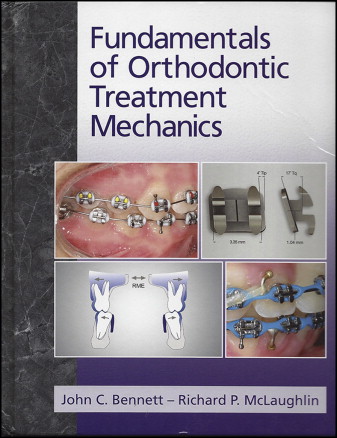
The coauthors of Fundamentals of Orthodontic Treatment Mechanics are eminent figures in orthodontics: Drs John Bennett and Richard McLaughlin. Their book covers all aspects of the “McLaughlin Bennett System 4.0,” the origins of which date back to the 1980s, much influenced by the work of Dr Larry Andrews and his straight-wire appliance in the early 1970s. Each of the 14 chapters is preceded by a table of contents that lists the chapter sections and corresponding page numbers; this is helpful in locating specific topics. It is the third book published by these authors, and they described it as the final volume of a trilogy. The other 2 books were published in 1993 and 1997, and have different titles. The authors stated that the new book summarizes their earlier work and brings everything up to date.
They cover several topics in this new book that were not previously discussed, including “Settling the case” and “Posttreatment management” (Chapters 12 and 14). The book is clinically oriented and features many superb photographs and illustrations. It contains 15 well-documented case reports in various chapters and for the first time includes transfer cases.
Chapters 1 and 2 deal with treatment goals and methods. Chapters 3 through 8 review such topics as bracket design, archwires and arch form, anchorage control, and so forth. There is a discussion of a protocol for bracket bonding to mitigate white spot lesions in Chapter 6. There are also a discussion and case illustrations of the use of temporary anchorage devices in Chapter 8. The real “meat” and clinical applications of the Bennett-McLaughlin Principles and Philosophy are found in Chapters 8, 9, and 10: “Nonextraction treatment,” “First premolar extraction treatment,” and “Second premolar extraction treatment,” respectively. In the final 3 chapters, the authors discuss settling the case, appliance removal and retainer placement, and retention, relapse, and postreatment changes.
This book is recommended for all readers, but it would be particularly useful for orthodontic residents and newly practicing orthodontists. It can be read in an afternoon by a seasoned orthodontist but would take much longer to read and study for a novice orthodontist.
Stay updated, free dental videos. Join our Telegram channel

VIDEdental - Online dental courses


